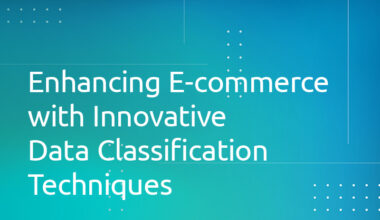Data migration is a standard process for many businesses, especially in the realm of e-commerce. Yet, transferring your information from one system to another isn’t just about making a simple move. Think of it like relocating to a new home; you wouldn’t want to bring along all the clutter, would you? Before the actual migration, it’s pivotal to undergo a thorough data cleanup. Let’s delve into the essential preparatory steps you need to undertake to ensure your migration is as seamless and efficient as possible.
Why Data Cleanup is Crucial
Jumping straight into data migration without prior cleanup can lead to numerous challenges. These can range from system inefficiencies and skewed analytics to poor user experience and decision-making based on incorrect data. Cleaning your data not only paves the way for a smoother migration but also ensures that you’re only moving relevant, accurate, and high-quality data to your new system.
Steps for Effective Data Cleanup Before Migration
- Data Audit:
- Start by taking stock of your current data. Understand its origin, quality, and relevance.
- Identify outdated, redundant, or irrelevant information that doesn’t need to be migrated.
- Data Validation:
- Ensure that all data adheres to the necessary standards and formats.
- Look out for any anomalies or inconsistencies in your dataset.
- Remove Duplicates:
- Duplicate data can bloat your system and lead to inefficiencies. Use tools or software that can help identify and remove these redundancies.
- Standardize Data Formats:
- Different systems might use varying data formats. Before migration, ensure all data, be it dates, currency, or names, follows a consistent format suitable for the new system.
- Address Missing Data:
- Identify any gaps in your data and determine if they need filling. If certain data points are consistently missing, consider whether they are necessary or if the field can be eliminated.
- Establish Data Hierarchies and Relationships:
- Define the relationships between different data entities. This ensures that when the data is migrated, its relational integrity remains intact.
- Secure Sensitive Data:
- If you’re dealing with sensitive or confidential data, ensure it’s encrypted or anonymized, especially if the migration process involves third-party tools or services.
- Backup Everything:
- Before making any changes or deletions, ensure you have a comprehensive backup of all your data. This acts as a safety net in case anything goes wrong.
The Role of Automation in Data Cleanup
Modern data cleanup tools leverage automation to streamline the process. With features like automatic duplicate detection, format standardization, and error identification, these tools can significantly reduce the time and effort required while increasing accuracy.
A successful data migration process begins with thorough data cleanup. By ensuring your data is accurate, relevant, and well-organized before migration, you’re setting the stage for enhanced system performance, better analytics, and a more efficient operational environment in your new system. Remember, it’s not just about moving data—it’s about moving value.
Considering a data cleanup before your migration? Contact Retail Taxonomy to explore our services related to essential preparatory steps for smooth and efficient data migration. Reach out to us today to discuss how we can assist your business in this crucial process.
 1.416.619.5349 Ext.325
1.416.619.5349 Ext.325 







